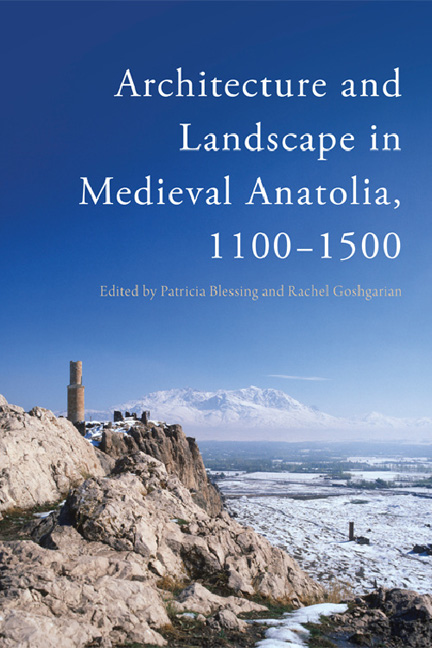Book contents
- Frontmatter
- Contents
- List of Illustrations and Tables
- Acknowledgements
- Foreword
- Map
- 1 Introduction – Space and Place: Applications to Medieval Anatolia
- Part I Building: Masons and Infrastructure
- 2 Craftsmen in Medieval Anatolia: Methods and Mobility
- 3 Stones for Travellers: Notes on the Masonry of Seljuk Road Caravanserais
- Part II Social Groups: Akhis and Futuwwa
- Part III Exchange: Islamic and Christian Architecture
- Part IV Frameworks: Language, Geography and Identity
- Notes on Contributors
- Bibliography
- Index
2 - Craftsmen in Medieval Anatolia: Methods and Mobility
from Part I - Building: Masons and Infrastructure
Published online by Cambridge University Press: 03 January 2018
- Frontmatter
- Contents
- List of Illustrations and Tables
- Acknowledgements
- Foreword
- Map
- 1 Introduction – Space and Place: Applications to Medieval Anatolia
- Part I Building: Masons and Infrastructure
- 2 Craftsmen in Medieval Anatolia: Methods and Mobility
- 3 Stones for Travellers: Notes on the Masonry of Seljuk Road Caravanserais
- Part II Social Groups: Akhis and Futuwwa
- Part III Exchange: Islamic and Christian Architecture
- Part IV Frameworks: Language, Geography and Identity
- Notes on Contributors
- Bibliography
- Index
Summary
The following analysis of the two primary materials, stone and brick, and the methods of combining and manipulating them, is used to delineate a methodological framework for determining the processes required to build large-scale construction projects. The specific focus here is the situation in Anatolia in the late twelfth and early thirteenth centuries, but the principle of analysing the constituent elements of buildings in order to understand the working methods of the craftsmen is applicable to much of the architecture of the premodern world. In lieu of any surviving technical treatise, the detailed study of techniques and decorative motifs can provide a wider understanding of the training, geographic origins and mobility of the craftsmen responsible for the construction of the Islamic architecture of medieval Anatolia. Stylistic and comparative analysis with structures in the wider Islamic world, from Iran and Central Asia to Syria and Egypt, can provide evidence for assertions with regard to the origin and training of a number of the craftsmen working in Anatolia in the twelfth and thirteenth centuries.
Aside from the indigenous building traditions, two clearly discernible, external sources were integral to the development of a unique Anatolian architectural aesthetic in the first quarter of the thirteenth century. First, stereotomic stone-working methods, developed primarily for marble construction in Zengid and Ayyubid Syria in the late twelfth and early thirteenth centuries, can be found in Konya. Second, the brick and glazed-tile building style that flourished in Iran under Ildeguzid patronage in the twelfth century was used in a number of surviving buildings across Anatolia.
This chapter presents evidence of craft practices gleaned from a close analysis of buildings in order to understand the working methods, mobility and origins of craftsmen active across Anatolia. The primary focus is on buildings erected between 1170 and 1220, and mainly involves buildings with Rüm Seljuk connections because the surviving corpus of buildings is primarily associated with their patronage. However, the mobility of craftsmen, as well as the fluidity of boundaries and political alliances, means that the results also apply to a number of the surviving SaltEkid and Mengujekid structures in central and northeastern Anatolia. The strong influence of, and in some cases on, the indigenous Armenian and Byzantine traditions, alongside the evidence of Persianate brick and glazed-tile structural and decorative techniques is clear.
- Type
- Chapter
- Information
- Publisher: Edinburgh University PressPrint publication year: 2017



